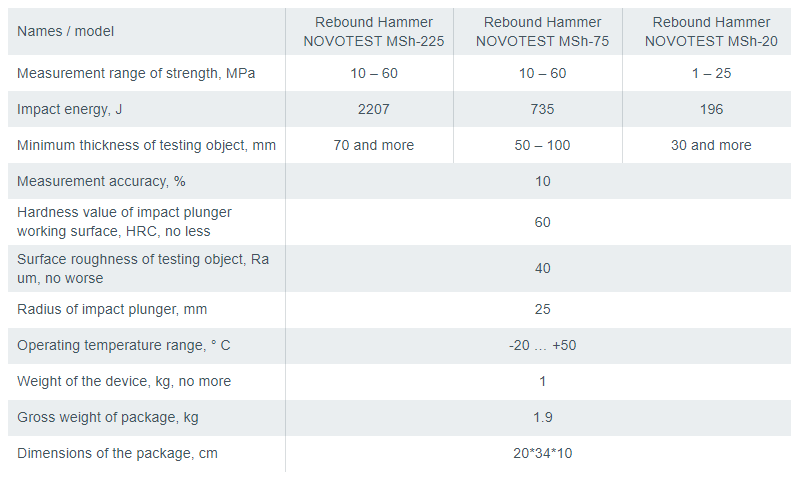购物清单
CNY - ¥
OEM/OEM代工 混凝土回弹锤(硬度计)
| 品牌: | OEM |
| 模型: | Novotest Msh |
产品描述
Overview
Concrete rebound hammer (sclerometer) – is a device for concrete and other building materials strength testing. The engineer Ernst Schmidt invented the construction of the sclerometer.
The method is based on impacting the impact plunger on the concrete surface with predetermined (normed) impacting energy and subsequent measuring of the height of the striker rebounding. The height of the striker rebounding will be proportional to the strength of the concrete. The strength of concrete is determined with the calibration charts that are supplied with the instrument.
There are several versions of the device, which are different in impacting energy.
- The most “powerful” Rebound hammer is designed to measure the strength of concrete with a thickness of 70-100mm and more, also for the strength testing of massive rocks with impact energy – 2,207J (Nm). This is the base and the most common model of the Rebound hammer, about 90% of the Rebound hammers in the world have the same impact energy.
- Average “powerful” Rebound hammer has the 735J (735 Nm) impacting energy. The impact energy is reduced threefold compared with the base model. The main application of this instrument is measuring the strength of bricks and concrete products with a wall thickness less than 100 mm and small sizes of samples, also used for testing the less strength stones and rocks.
- The least “powerful” Rebound hammer has 196J (196Nm) impact energy. The main purpose is the strength testing of the mortar of brick masonry.
Advantages
- Ease in operation
- Good Reliability Design
- High Measurement Accuracy
- Can test all kinds of concrete and other building materials
- 3 modifications with different impacting energy
Specifications

¥ 6969.15
| Units | 折扣 | 单价 |
|---|---|---|
| 1 | - | ¥ 6969.15 |
数量:
EA
This item is sold by
SG-5403388873
免费送货 以上SGD 1000在本店消费
Highly Matched Items
View items that have the same or are a close match to the specifications of this item
来自 OEM 的 Other Measuring Tools
寻找和比较同类产品
更多来自 Other Measuring Tools
用更广泛的选择扩大您的搜索范围
最近浏览过的 产品
比较和参考以前查看的项目